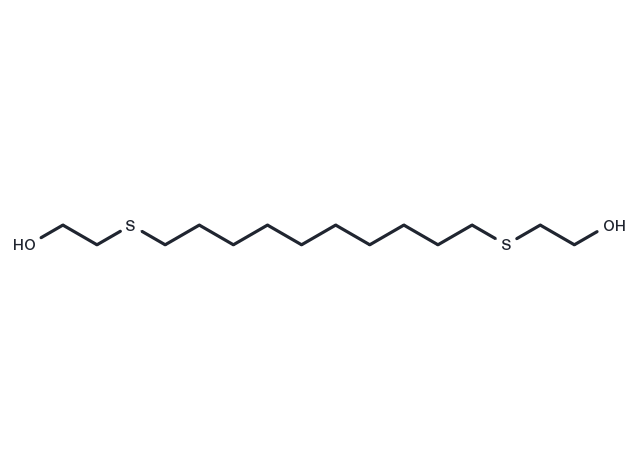Powder: -20°C for 3 years | In solvent: -80°C for 1 year


Tiadenol is a Hypolipidemic Agent.

| Pack Size | Availability | Price/USD | Quantity |
|---|---|---|---|
| 25 mg | 6-8 weeks | $ 1,520.00 | |
| 50 mg | 6-8 weeks | $ 1,980.00 | |
| 100 mg | 6-8 weeks | $ 2,500.00 |
| Description | Tiadenol is a Hypolipidemic Agent. |
| Synonyms | LL 1558, NSC66316, LL-1558, LL1558 NSC 66316, NSC-66316 |
| Molecular Weight | 294.52 |
| Formula | C14H30O2S2 |
| CAS No. | 6964-20-1 |
Powder: -20°C for 3 years | In solvent: -80°C for 1 year
You can also refer to dose conversion for different animals. More
bottom
Please see Inhibitor Handling Instructions for more frequently ask questions. Topics include: how to prepare stock solutions, how to store products, and cautions on cell-based assays & animal experiments, etc.
Tiadenol 6964-20-1 LL 1558 NSC 66316 NSC66316 LL-1558 LL1558 NSC-66316 LL1558 NSC 66316 LL1558 NSC66316 LL1558 NSC-66316 inhibitor inhibit
